Blog
- Details
- Hits: 653
You have so many emotions wrapped up in changing address: there could be feelings of sadness saying goodbye, combined with the excitement of your new home. Moving home is full of highs and lows and just when you think you are coming to the end, you have one of the most of the stressful stages to come, the big move! There are ways that you can minimise the mayhem, add some calm and take some of the aghhh out of moving day. Here is our advice on how to cope with the stressful stages of moving home.
Pre-sale stage
Most home movers don’t think about packing until they have an offer accepted and they are well within the sales process. It is normal to think you have all the time in the world, but what tends to happen is that as time starts ticking by, the more procrastinating we do. It is that overwhelming feeling of looking at ‘all that stuff’ in your home and wondering where and how to start that adds stress onto an already stressful situation.
This is why we would always advise that you think about starting your preparation for moving home before you sell your house.

Yes, that early!
Whilst you are starting to declutter and organise your home to present it for sale, there is nothing to stop you from starting to pack a few bits and pieces along the way. There will be plenty of things that you won’t need before you move, so instead of them taking up space in your home, why not pack them away. This will give help to make your home feel more spacious due to being less packed with things, but it also gives you a head start.
Panic packing
Completion date is on the horizon and that moment of panic that can hit where you look around your home and scream , ‘Where do I start?’ One thing we always say at this stage is purge – you need to get rid of those non-essential items. Not only will this feel cathartic but may even reduce the cost of your move.
You also should measure pieces of furniture you are planning to take before your move, to make sure they will fit in your new home. There is no point taking things that are not going to fit; can you imagine how frustrating that will feel to arrive and find your sofa won’t even fit through the door? Moving day will be stressful enough without adding the drama of furniture not fitting as well.

Labelling is also essential. This is another major stress when moving, not being able to find things because you’ve not put them in the right box or the box isn’t labelled. If you are using a removal company, it is also important to talk to them before you start packing, they may have a system they may wish you to use as well as certain sizes of boxes.
Day of reckoning
It is the night before the big day and we know there will be so many things rushing through your mind. In all the haste to pack everything for your home, have you managed to pack a bag for yourself? Make sure you have important paperwork and ID, such as your passport – you just never know what you may need. Chargers for all those important electronics, essential medicine, your daily toiletries and also a change of clothes. Remember there can be delays and so bear in mind that if you have everything labelled and organised, no matter what you need you will be able to find it.
And breathe
The day has arrived and things will no doubt take a lot longer than you envisaged. To lower your stress levels, giving your children and pets a day off is the best way to start. Do not put extra pressure on yourself, there is no rule book to say you have to unpack everything in a day; in fact, who cares if it takes you weeks or even if you have boxes in the garage months later!
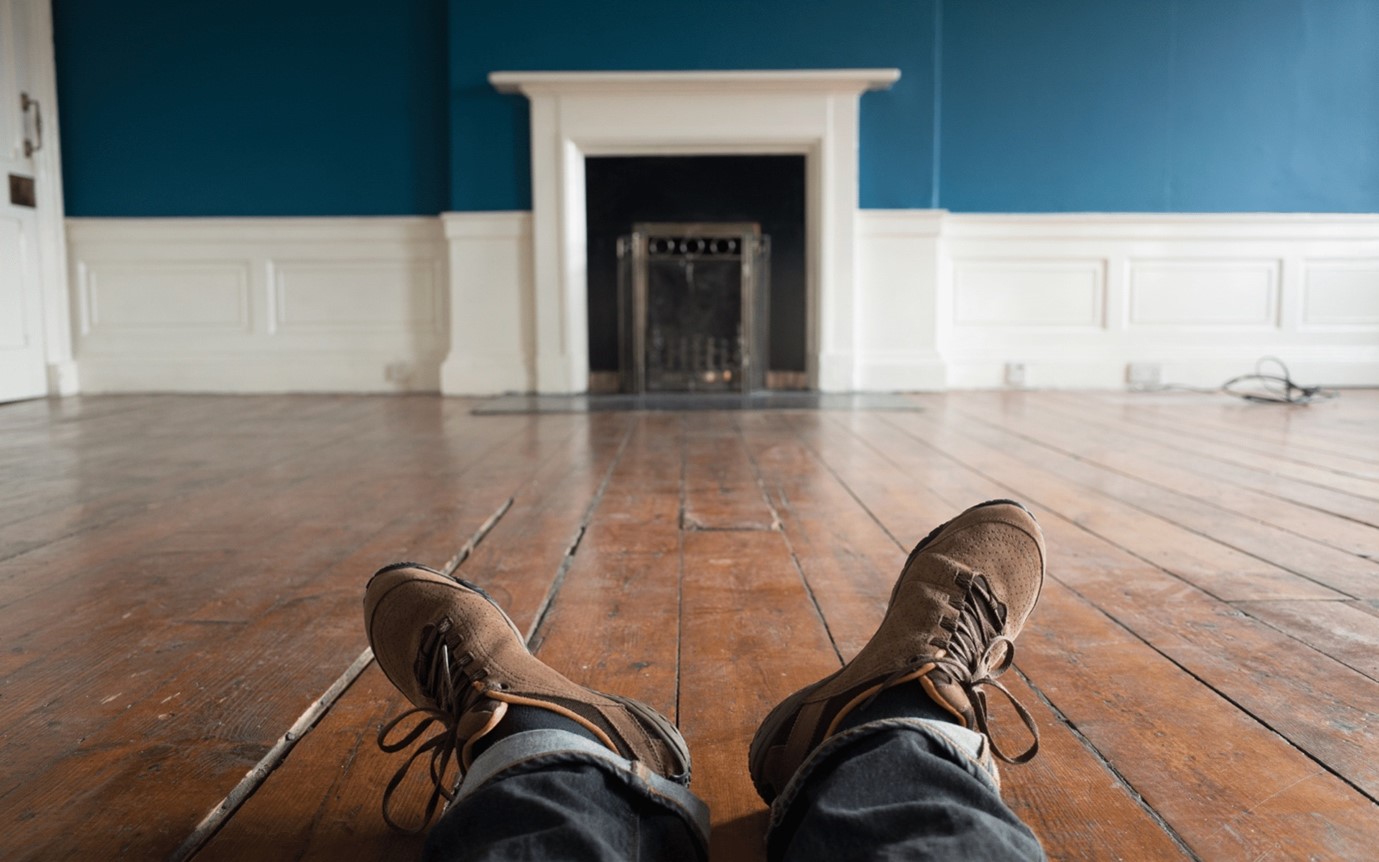
If you have everything labelled, you will know what to unpack first and which boxes you can place to one side until another day. Being in a new home and trying to fit your old house into it can be disorienting, it will take time for you to fuse the old and new together to create the home you have been dreaming of.
If you would like more advice on moving home, contact our team at Deakin-White.
- Details
- Hits: 653
No matter which TV channel you switch on these days there seems to be a programme about dating, from Love is Blind and Love Island to the one that is always met with disbelief, Married at First Sight. Here contestants commit to marrying someone they have never met, and, before you gasp in horror, many buyers commit to making the biggest investment of their life to date by buying a property after the first viewing. With this in mind, what tips can you as a buyer learn from such dating shows in our Married at First Sight Deakin-White Edition.
The wedding
You have been trying to find the ideal house match for weeks, maybe months and even years. Just like online dating, things can be equally frustrating: properties may not look the same as the photos or you don’t get that initial and all-important spark, and then you get a call to view a property that you have not seen, before it hits the market. You walk towards the property with trepidation, unsure what to expect, nerves are battering your stomach and you hope it is everything you imagined.

As you walk through the door, do you have butterflies? Is there a spark? Are you falling in love? First impressions are, of course, important, but do make sure you take everything into account so your heart doesn’t rule your head and you have disappointments down the line.
The morning after
Things always look clearer the next day, but with the current property market you may not wish to wait to make a move. It may not take until the next day for the cracks to appear in your love for the home; there may be things that will mean you have to compromise on your wish list, or the property could need some work. Just as nobody is perfect, a ‘perfect’ property can have one or two niggles, so always look at everything and only when you have the full picture can you be sure if this house is the new love of your life.

The dinner party
One of the events the contestants in the TV programme participate in is the regular dinner party, where they all get together to air their views and opinions. You will no doubt wish to discuss the property with your friends and family, and they will no doubt have a few things to say. Remember that they have not seen the house, so can only go from your feedback, but don’t let them cloud your judgement. You know in your gut if this is the one for you.
Commitment ceremony
Are you ready to commit to this property for the foreseeable future? It is decision time: are you going to say I do to this property you have only seen at first sight? If you have any questions, now is the time to get them answered; as well as asking advice from those close to you, you should also ask the experts. At Deakin-White we want you to ask questions, because the more you ask the more certain you will be in the decision you are about to make.

Final vows
Having an offer accepted is only the starting point for buying a property. You think finding a property to love is hard. The sales process can shatter emotions, create issues and doubts, and put your certainty for this house of your dreams at risk. You need to keep reminding yourself of the importance of your feelings at ‘The Wedding’, acknowledge those morning-after thoughts and see the positives, consider those views expressed at the dinner party and how you made the decision to commit.
You and your new home will face some challenges in the years to come, and you will never forget the first time you met At Deakin-White we look forward to playing a part in your very own Married at First Sight Deakin-White Edition. Give our team a call.
- Details
- Hits: 797
Key information
- Prefab - short for prefabricated - means the building has been constructed off site, it’s not about the style or design
- Going down the prefab route could be cheaper and will certainly allow you to budget more accurately
- Prefab homes tend to be quicker to build, more durable and more heat efficient
Building a bespoke home from the ground up is a dream for many. But unexpected problems that delay construction or blow the budget can turn a self-build into a nightmare.
With that in mind, many self-builders are turning to prefab homes as an alternative. With the construction done offsite and to high factory standards, prefabs can remove a lot of the uncertainty - and a lot of the risk - from a self-build project.
If you’re looking to build your own home and wondering if prefab is the way to go, our guide is here to take you through everything you need to know.
What is a prefab home?
Prefab homes come with a lot of connotations, and not all of them are good. For many people, the term conjures images of identical and uninspiring dwellings erected on the cheap - or worse, the squat “tin town” emergency housing of the postwar years.
But the modern prefab means something very different. Prefab, short for prefabricated, just means that the building is constructed off site in a factory and then delivered to the plot to be assembled. Modular construction like this is a method, not a specific style or design.
Using a prefab doesn’t necessarily mean you have any less freedom to design your house than if you were building it the traditional way. It is true that some types of prefab are more prescriptive than others. Kit houses for example come pre-designed with little to no input from the buyer, while some cheaper prefab packages offer only a limited range of flexibility.
However, the majority of prefab house suppliers will work with you to ensure the house is built to your design and specifications. From the roof and walls to the internal layout and fittings, you’ll still have enough design control over your prefab home to create a completely bespoke project.
Are prefab homes cheaper than building?
If self-builds are notorious for one thing, it’s their tendency to burn through even the most careful of budgets. So it’s no wonder that prefabs are often looked to as a way of realising a dream home for a fraction of the usual cost.
Unfortunately when it comes to initial costs, prefab homes aren’t much cheaper, if at all, than a traditional build. In fact, prefabs can sometimes price higher as they need extra materials to ensure they’re strong enough to journey over motorways and bumpy roads from the factory.
That being said, prefab projects can often work out cheaper in the end. For starters, you’ll likely be paying less in labour costs as construction times can be faster. But most importantly, prefabs offer much greater certainty on what the final cost will be.
Because prefabricated houses are built to precise specifications, it’s far easier for suppliers to estimate required materials. That can spare you from either paying for more than you need, or having to dip into a contingency budget to buy extra materials partway through the project. Building a house inside a factory also gives you an extremely accurate timescale, as inclement weather won’t be able to halt work and cause any costly delays.
The benefits of prefabs
In the long term, prefabricated buildings offer quite a few advantages over traditionally-built homes. For starters, they are considered inherently more durable. Prefabs need extra reinforcement to withstand being transported from the factory to your building site. And while that increases the costs - on average they require 10-30% extra materials for reinforcement - it also gives prefabs greater structural strength.
In fact, studies in the US have shown that prefab homes - and modular homes in particular - suffer less property damage after hurricanes and tornadoes than traditional builds. While your home is unlikely to be tested to quite the same extremes in the UK, it’s still reassuring to know just how sturdy a prefab can be.
When it comes to energy efficiency, prefab homes tend to have the upper hand. That’s because the high level of accuracy that comes from factory manufacturing means prefabs are generally more airtight, and therefore lose less heat. Not only will that help the environment, but it will also help keep your bills down.
But what if you decide to move on? A common misconception about prefab homes is that they’re worth less on the market than a traditionally-built house. However, on average prefabs are valued about the same as their counterparts.
Prefabs provide a high quality and affordable alternative to traditional builds, and for many self-builders they’re the best way to make their dream home a reality.
Deakin-White makes it easy to find, research, and buy land. Start your land journey today.
Credit: Addland
- Details
- Hits: 736
Home staging is a powerful tool when it comes to selling your home; the right staging can work miracles in most cases. Simply put, home staging is the term which describes preparing your home or ‘setting the stage’ for a potential buyer. This involves decluttering, organising, redecorating, cleaning, rearranging furniture and other strategies to make your home as appealing as possible. Staging is not designed to hide issues with your home, instead you should resolve these before you place your home on the market. With this in mind, here are some problems that home staging can’t solve when selling your home.
The big two
Adding some carefully positioned plants and flowers can not hide the obvious when it comes to outdated or tired kitchens and bathrooms. These are two rooms that can make or break a sale and, therefore, you need to ensure that you have done what is required to bring them up to standard. Broken doors or shelves withing kitchen cabinets are not only a turn-off but can ring alarms about the condition of the rest of the property. New grouting and a fresh lick of paint can make a huge difference, and should your kitchen doors need some love, could painting or re-spraying be a solution? One thing is for sure, you need to work harder in these rooms to make other areas of your home shine.
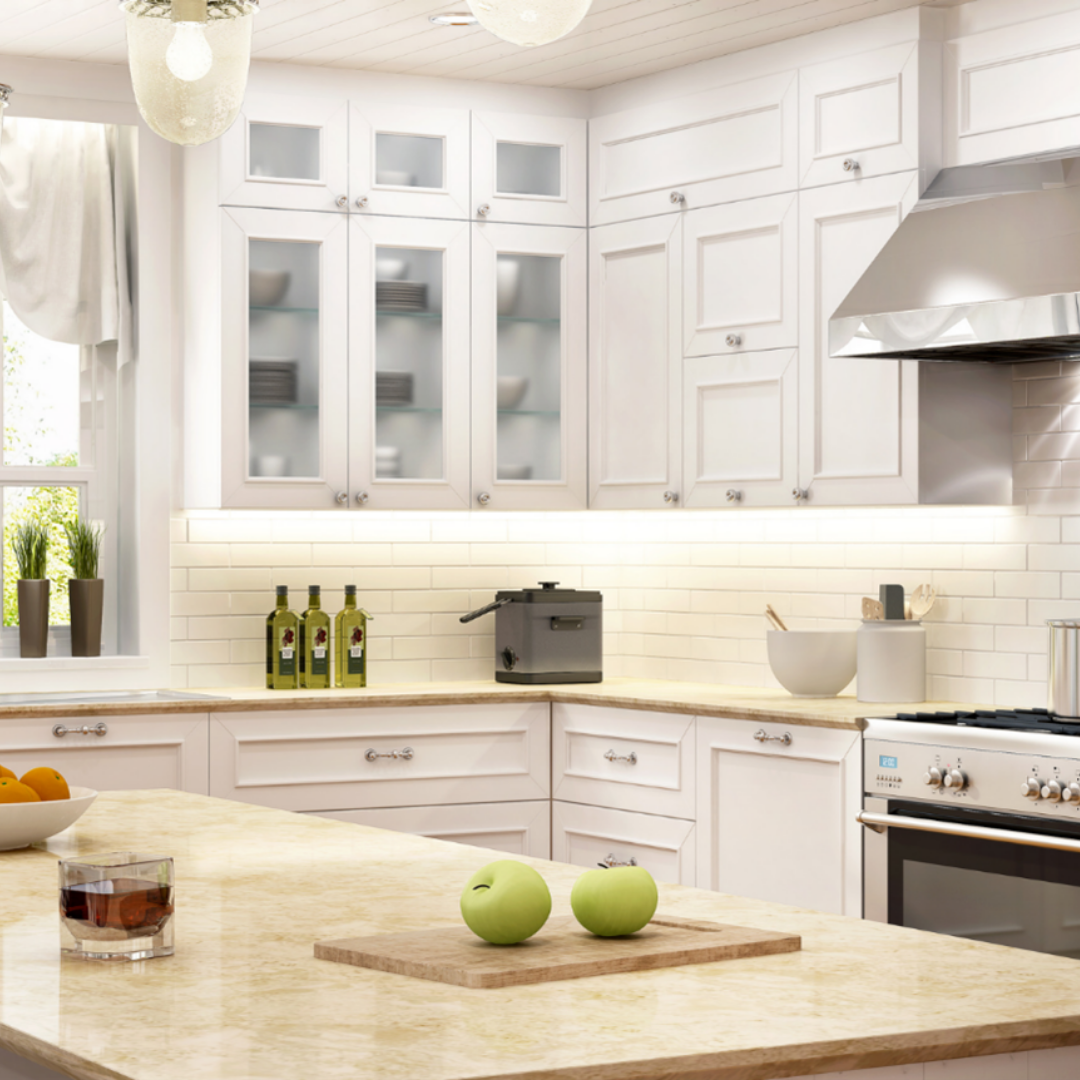
Outdated and odd features
All homes, especially older ones, can charm buyers with their character and quirkiness, but should this uniqueness be odd or outdated it will have the opposite affect. Home staging won’t distract buyers from the weird and wonderful, in fact it will focus their attention completely and away from the property as a whole and could also impact the potential value of your home as well. Therefore, if you have neglected to update or remove such features we would certainly recommend that you consider undertaking the work before you take the step of inviting estate agents round to value your home.
Rushed makeover
You may have been working hard to get your home ready for sale but decided that you don’t need to decorate. Adding the most stylish and exquisite pieces to a room won’t disguise a tired paint job, and buyers will notice. But in the haste to get your property on the market your paint job may not be to a professional standard, and this will stand out a mile. If you are not up to the task then investing in a decorator will take away the stress and also leave your home looking like Britain’s Next Top Show Home.

Damaged flooring
Rugs are often used in home staging to define spaces within a room; what they are not designed for is to hide damage or other floor issues. Some flooring problems can be felt underfoot when walking across the area, and hiding them with a rug will look deceitful, which is the last thing that you want when selling your home. Take a look at your carpets as well – have they seen better days? If so, it could be worthwhile replacing them or at least having them steam cleaned so they are looking the best they can be for potential buyers.
No hiding smells
Your home could look immaculate, be beautifully staged and be the dream that buyers are seeking, but if there are unwanted odours, the image that you have created will be shattered into pieces. If you are a smoker or have pets, having rugs, carpets and furniture cleaned will help to remove those lingering smells which potential buyers will notice immediately. Also, be wary of using plug-ins, air fresheners or scented candles – these can have very strong and dominant fragrances which can overpower a room. Using such strong scents can also start buyers wondering if you are trying to hide other smells which are lurking underneath.

Do the work
If you wish to get the best price for your property, you need to put in the work before you look to place your house on the market. Home staging is there to enhance your home’s natural beauty, not to be used as a tool to hide its issues. It is important that you look at your home through critical eyes, only then can you see its flaws just as a potential buyer will do on a viewing.
If you would like advice on how best to approach getting your home ready for sale, call our sales team.
- Details
- Hits: 762
It’s the season of bank holiday weekends, which for many of us means a chance to do some DIY and upgrade our home. You want to ensure any changes you make create a better environment for your family but also add value to your home should you decide to sell in the future. DIY can be a blessing and also a curse: it has the ability to enhance our homes but also destroy them. According to independent inspection body RISA, homeowners have spent over £6 billon trying to resolve DIY disasters. At a time where every penny counts, you won’t want a DIY SOS rather than an upgrade that will add value to your home.
Know your limitations
Before you pick up a hammer, knock down a wall or rip out the bathroom, be honest with yourself; we know that DIY can save you money and we relish the challenge and sense of achievement when the task is completed and looks fantastic. But what happens if you are out of your depth, and the small job uncovers another issue? Know when to get a professional in, as bad DIY can quickly knock thousands off the value of your home.

Start with first impressions
There will always be that house on a street that stands out from the rest: the home whose exterior shines, it may be minimalist chic, beautifully adorned with hanging baskets, or just give off that warm welcome that shows the home is loved. First impressions really do count and set the tone for the rest of your home; therefore, when it comes to where to start your DIY jobs, start from the very beginning with kerb appeal.
Your front door is the focal point of your home’s kerb appeal, a quick wash or a fresh coat of paint can really make a huge difference. Jet wash any paving. A healthy lawn and tubs and beds full of colour and life with seasonal planting will show that this home is loved and cared for. Potentially, having an attractive kerb appeal could add 2% -3% onto the value of your home.
Don’t forget the small stuff
It is easy to pay attention to the big jobs you wish to undertake and neglect those little jobs for another day. But it can often be the little things that ring the biggest alarm bells for potential buyers: dirty walls, mouldy sealant, broken lightbulbs all say that this home is not cared for and buyers will wonder what bigger issues lie beneath the surface.
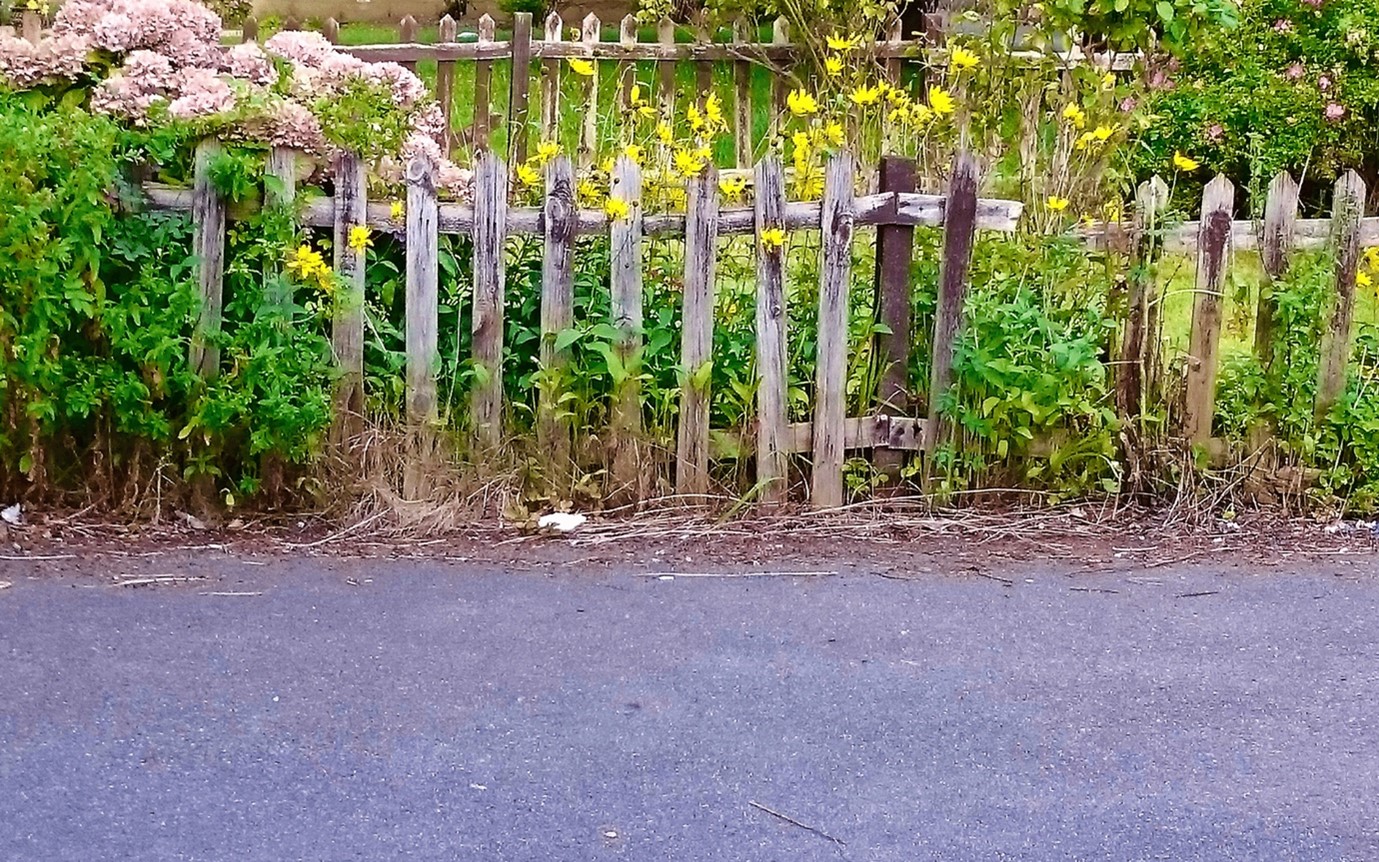
Bathrooms
At some point you may wish to upgrade your bathroom, especially if it is starting to look tired, as this is a space in our homes where we can relax. The bath vs shower debate is one only you can decide, but bear in mind that, should you decide to sell in the future, not having a bath could turn some buyers off your home. Whatever you decide, it is essential to get it right and keep to your budget. You may wish to seek professional advice, or even ask them to undertake some of the work. As they say, kitchens and bathrooms sell houses, but most importantly create a bathroom that you will love to spend time in.
Your outdoor space
Your garden or terrace is an extension of your home; it is another ‘room’ in your property that, as the warmer weather starts to appear, you will want to spend a lot of time in. During lockdown we know that gardens were a DIY favourite, and the passion for having a garden that works for your family has not diminished. Every member of your family can potentially have a hand in upgrading your outside space, whether it is choosing the plants and shrubs or doing some heavy lifting as required. Our tip would be to make sure that your different zones flow into each other and that your choice of materials creates a cohesive style that defines and elevates your garden into a stylish haven you all can enjoy.

Upgrades on a budget
There are many jobs you can do that will potentially help the value of your property but will also not require a large investment like a new kitchen or extension would. From decluttering to decorating, organising and freshening your home’s décor can make a huge difference to how you enjoy your space as a family but also can increase your home’s attraction to potential buyers. There are plenty of ‘organising’ shows on TV to give you some inspiration, from Netflix’s The Home Edit to Stacey Solomon’s Sort Your Life Out, with some simple changes your home can be transformed.
A word of caution
We would be remiss if we didn’t advise you that not all renovations and home upgrades will add value to your home, therefore, if you are thinking of undertaking a big project, please talk to your local estate agent to ensure that the works you do will add value and not exceed the ceiling price for a property in the area.
If you would like any advice on simple or big DIY upgrades that will add value to your home, please call our team.
- Details
- Hits: 586
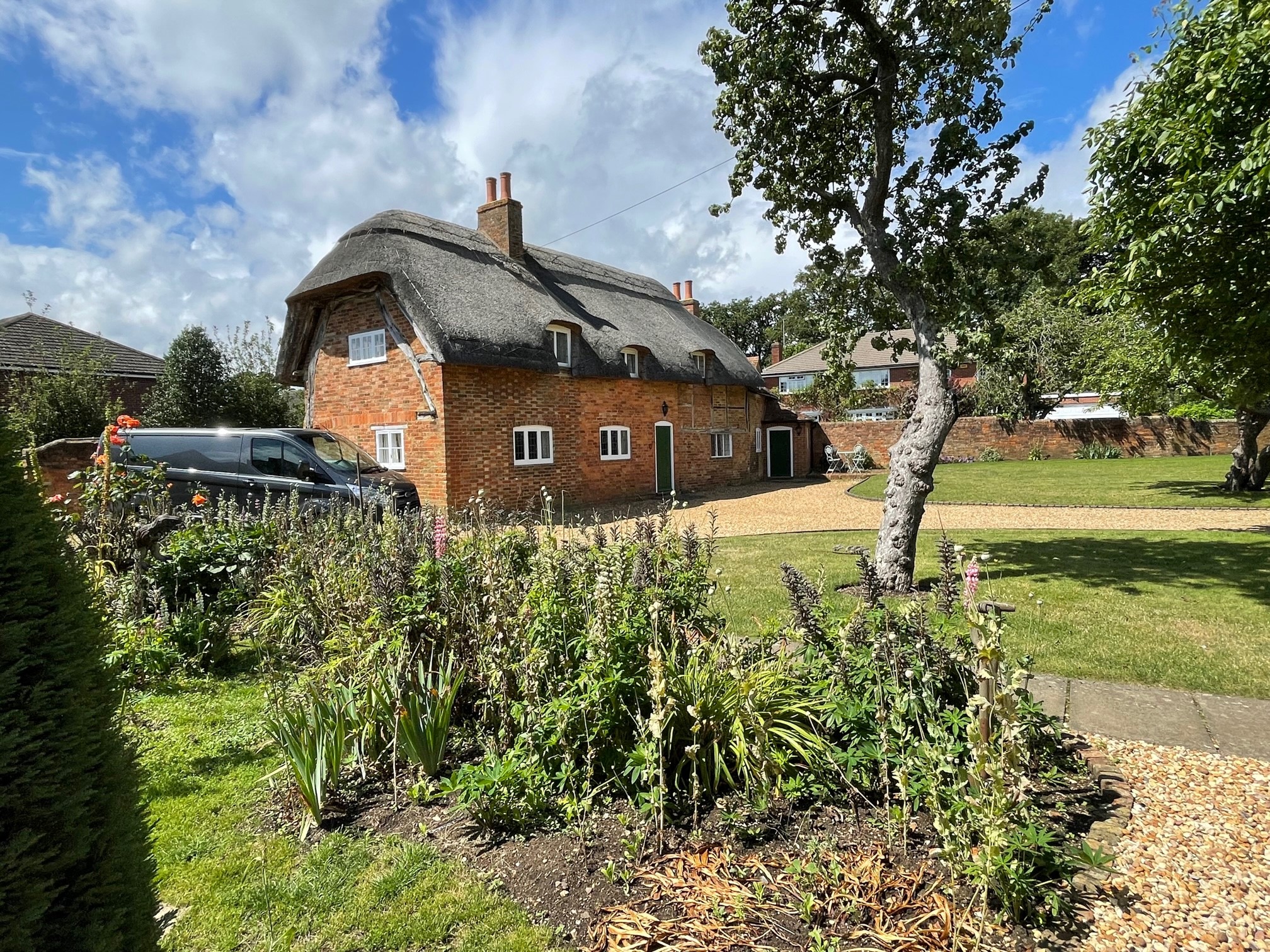
Listed buildings are considered nationally important and therefore have extra legal protection within the planning system.
What is a listed building?
A building is listed when it is of special architectural or historic interest considered to be of national importance and therefore worth protecting. As the term implies, a listed building is actually added to a list: the National Heritage List for England. You can use this to discover whether your home is listed and if so, what grade it is. You may also be able to find out what is particularly significant about the building. Some listing records are more detailed than others.
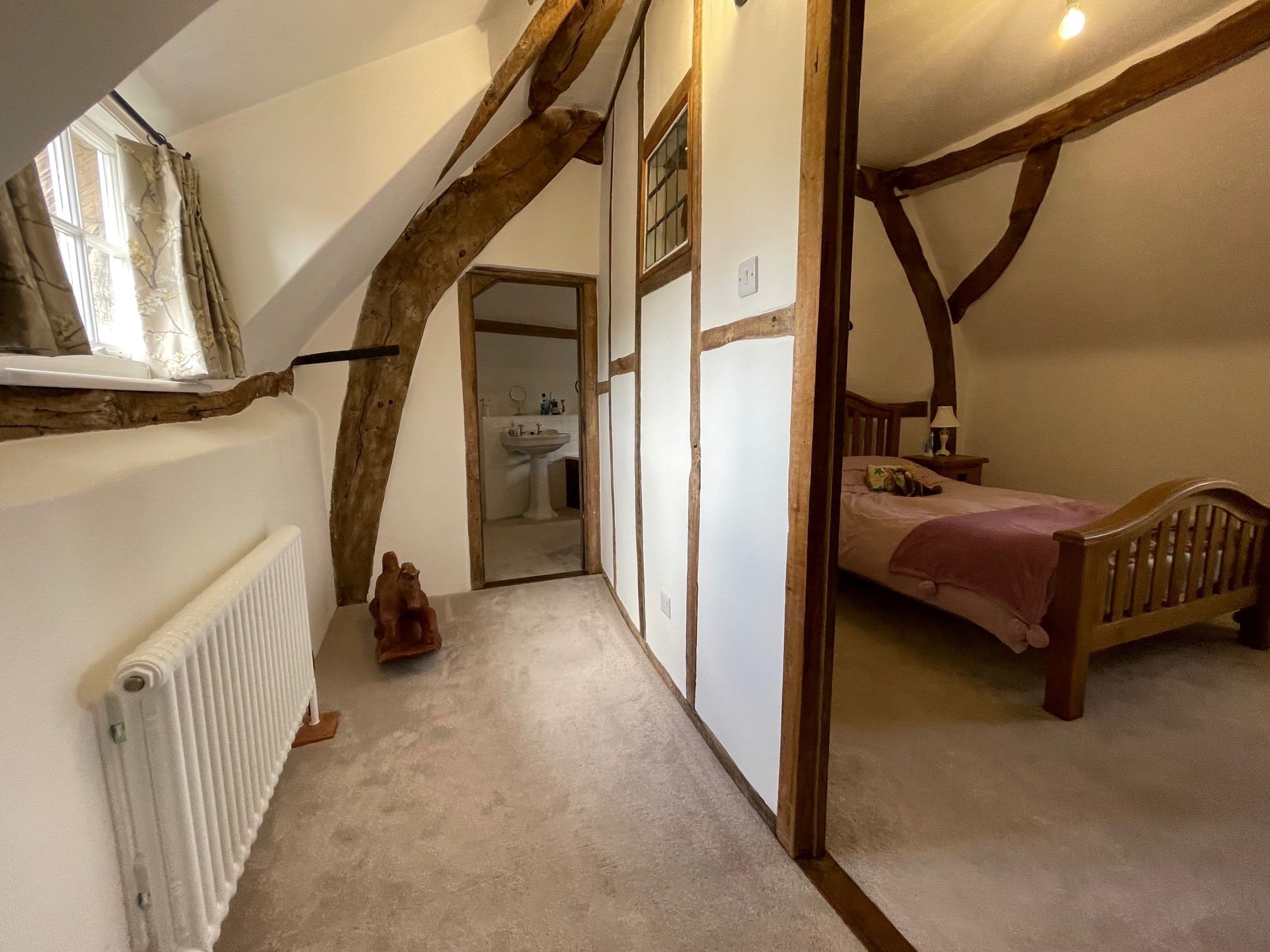
Listed buildings come in three categories of ‘significance’:
• Grade I for buildings of the highest significance
• Grade II* and
• Grade II Most listed building owners are likely to live in a Grade II building as these make up 92% of all listed buildings.
How does listing affect owners?
Listing means there will be extra control over what changes can be made to a building’s interior and exterior. Owners will need to apply for Listed Building Consent for most types of work that affect the ‘special architectural or historic interest’ of their home.
For more detail on applying for consent, please see Who Do I Contact?
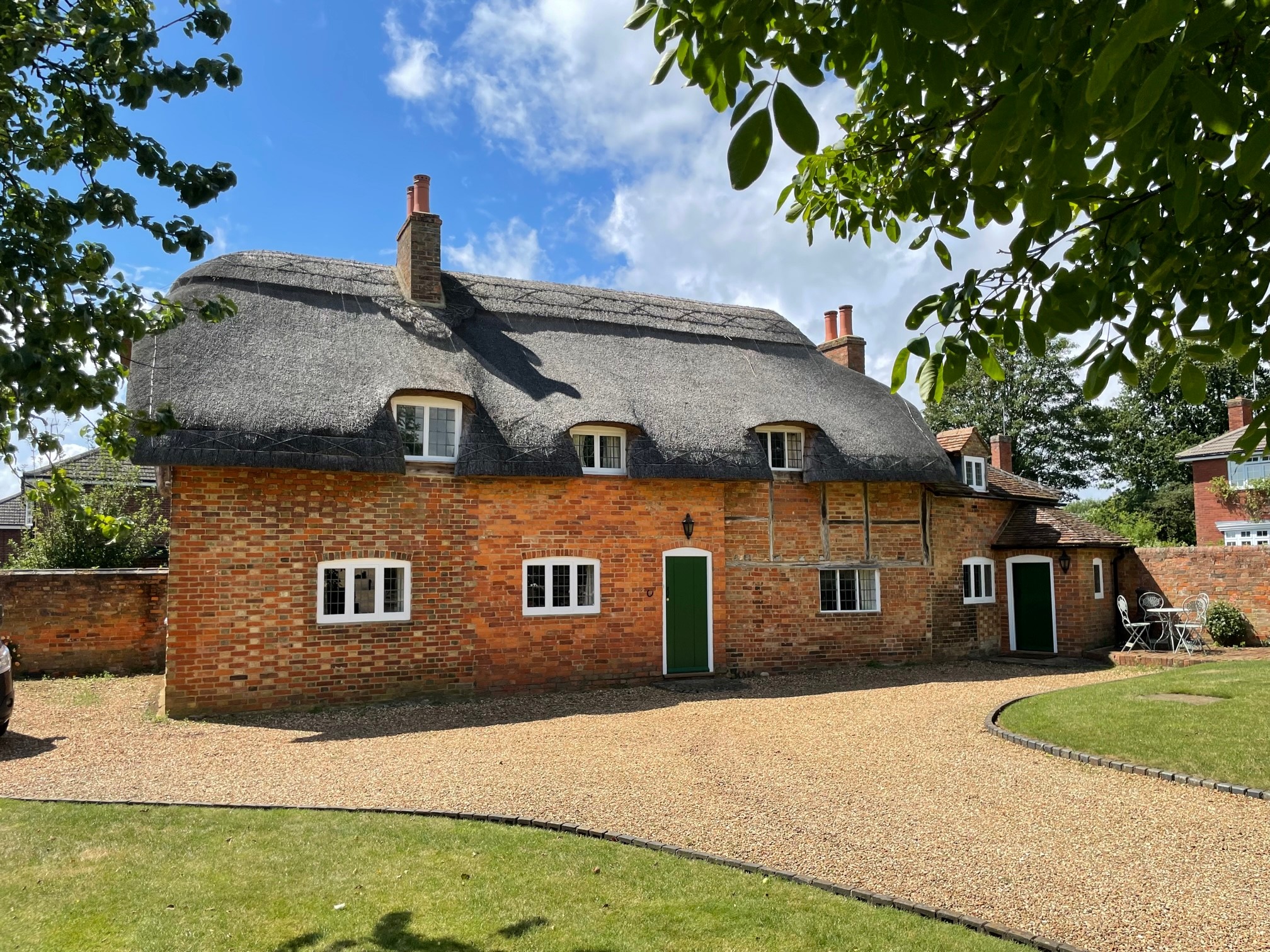
Your local authority
The planning department of your local authority decides whether to grant planning permission or listed building consent for proposed work. They can provide advice before and during the application process. They should be your first port of call if you wish to go ahead with making changes to your home. If you are thinking about making changes our section on common types of work, such as altering windows or adding a conservatory, provides useful tips about what to consider and whether you are likely to need permission. You will also find information on repair work in our section on looking after your home, and on energy efficiency measures such as solar panels in our section on saving energy. To find details for your local planning authority, visit the Government Planning Portal.
Conservation Officer
Most local authorities employ a conservation officer, who offers expert advice on applications and other matters relating to historic buildings and areas. They are an extremely useful point of contact if you own an older home. They will be able to advise you on a range of matters, including whether you will need extra consent for planned work, and what kind of work might be most appropriate for your house and its setting. When considering work to your home, it is advisable to discuss your proposals with the local planning authority and/or the conservation officer at the earliest opportunity. They can be reached by contacting your local authority.
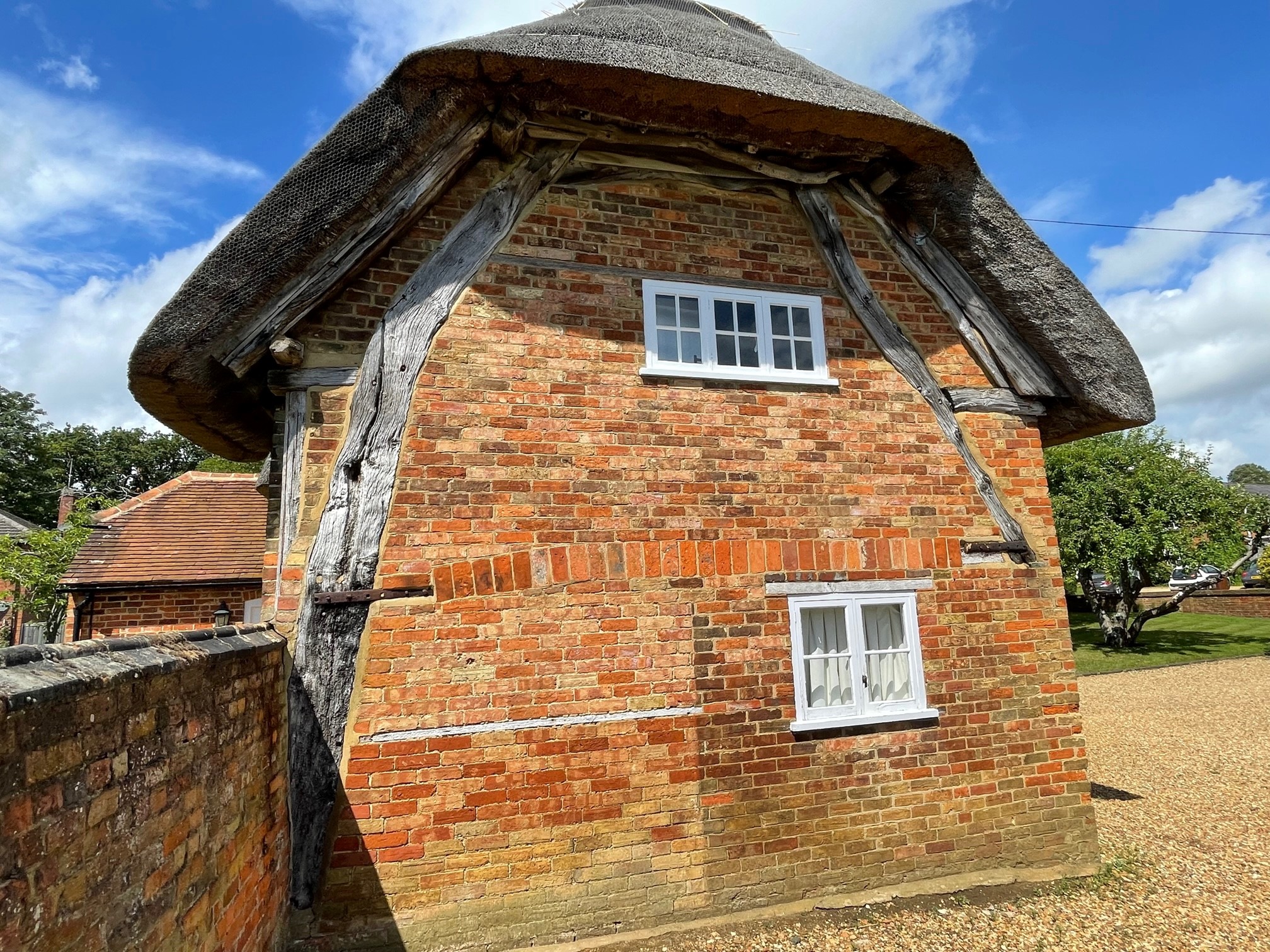
County Archaeologist
County archaeologists advise local planning authorities on the archaeological implications of development proposals. If you think your work might affect archaeology on your land, we recommend you consult the local planning authority’s archaeological adviser to discuss how these should be dealt with. It is always advisable to consult them at an early stage of developing your proposals.
When Historic England is consulted
Historic England don’t usually work with individual owners directly, as decision-making power ultimately resides with the local authority. Owners should therefore contact the local planning authority in the first instance.
What parts of the building does listing cover?
Listing covers a whole building, including the interior, unless parts of it are specifically excluded in the list description.
It can also cover:
• Other attached structures and fixtures
• Later extensions or additions
• Pre-1948 buildings on land attached to the building. (In the planning system, the term ‘curtilage’ is used to describe this attached land.)
Because all listed buildings are different and unique, what is actually covered by a listing can vary quite widely. It is best, therefore, to check this with your local planning authority.
For more detail on listing, see the Guide to Heritage Protection: Listed Buildings.
How do I find out if my building is listed?
If you think your home is listed but are unsure, the best place to start is our Search the List page. This allows you to search the National Heritage List for England by postcode or keyword. If you have your postcode to hand we recommend using the map search. This allows you to determine more clearly whether your building is listed and at what grade.
If you cannot find your building or are still unsure, please contact your local authority or our National Heritage List for England Helpdesk at This email address is being protected from spambots. You need JavaScript enabled to view it. Please note text & Information shared from the English Heritage website.
- Details
- Hits: 689
The average asking price across the UK is now £403k compared to £339k in Q1 2019, an increase of nearly 19% in two years. Book a valuation with Deakin-White to find out how much your home is now worth - www.dwrealestate.co.uk/valuation
With a sustained high level of Sales Agreed and no significant increase in properties coming to market, the lack of available properties is continuing to push prices up as demand currently significantly exceeds supply, providing for a sellers’ market.
All regions of the UK have benefited from the increase in property asking prices with the lower performance of Inner & Outer London a direct consequence of the impact of the pandemic.

Our extensive property data tracks homemovers as they make their way through the buying and selling process. Known as the Homemover Wave, this journey can last several months and is broken down into the specific stages below and triggered by activity such as online property searches, surveys and EPC reports.
At the beginning of April 2022 there are over 1.45 million households progressing through the home move journey. This is an increase of nearly 300k compared to January 2022 with the number of people entering the top of the funnel rising significantly.
The spending power associated with this massive volume of movers can bring huge revenue gains and strong ROI across multiple sectors and categories, particularly as our economy and retailers start to experience a slowdown in consumer expenditure.

If you are thinking of selling, click this link to see book a valuation today - www.dwrealestate.co.uk/valuation
- Details
- Hits: 754
Key information
- Equestrian property is land registered for keeping horses
- You’ll need at least 1–1.5 acres of land per horse
- An average horse will need a 12’x12’ stall
Owning equestrian property is a dream for every horse owner. Whether you’re a seasoned competitor or a casual rider, the convenience and pleasure of having your horse on your doorstep has endless appeal.
But horse properties are more than a house with an adjoining field. From land and stable size to access requirements, there’s a lot to consider to make sure you find a suitable property. In this guide, we’ll take you through everything you need to know to find the perfect home for you and your horse.
What is equestrian property?
Equestrian property is exactly what the name suggests: it’s property with the appropriate space and facilities to house horses.
If you’re buying land that’s not already being used to keep horses, you’ll have to apply for Change of Use permission from your local planning authority to register it as equestrian property. Agricultural land can be used for grazing horses, but beyond this, you’ll need to specifically register your land for equestrian use to avoid a planning breach.
How much land do horses need?
One of the most important things to look out for when buying equestrian property is the size of the plot. You don’t need to have a vast country estate with several acres of secluded pasture, but horses are large animals and need plenty of space to graze and exercise.
The British House Society recommends roughly 1–1.5 acres per horse. But if you can afford to go above that, your horse will be happier.
It’s important to remember that this acreage should only include land suitable for grazing. If you have any wooded land on your property, for example, that won’t count towards the amount of space your horses need.
When looking at property size, bear in mind its suitability long-term. Having more than you need at first gives you flexibility if you want to build facilities like an outdoor arena or keep additional horses in the future.
Finding the right location
As ever with property, location is key when looking for a home for you and your horses, and finding the right one will depend on your specific needs.
If you’re a casual weekend rider then you’ll ideally want a property with easy access or proximity at least to bridle paths. For competitors and professional riders, being able to quickly reach the motorway will be essential for getting to events.
Bear in mind that the region you focus your land search on may mean some compromises are necessary. In the densely-populated south east, for example, a property with perfect direct access to hacking routes will likely come with a high price tag to match.
However you ride, you’ll want to do some research before you buy to find out where the nearest equine vets and farriers are. Also think carefully about how the property is accessed, as you’ll need to be able to manoeuvre a horse trailer or truck in and out regularly.
What your horses will need
Just as important as location is the reason you’re looking for equestrian property in the first place: the horses themselves. Keeping horses isn’t as simple as finding a plot of grass. There’s a lot to consider to make sure things are right for them.
For starters, it’s recommended to have a yard within sight of your house for easy access and security. As for the land itself, the type of soil matters too. Free-draining limestone or chalk is best for keeping horses outside year-round, but soil that’s too heavy in clay will get boggy in the winter.
Finding a property with an existing barn or stables is recommended for first-time buyers. But always make sure the facilities are well-built, insulated, and have ample space — the BHS recommends 12’x12’ stalls for an average horse to move and lie down comfortably. Adequate tack and feed storage space is also important, as is running water and a sink. Horses are thirsty animals.
There’s a lot to think about when it comes to buying equestrian property. But with careful consideration of what you need, there’s no reason you can’t find your dream home for you and your horse.
Deakin-White makes it easy to find, research, buy and sell land, contact us today for your equestrian needs.
Credit: Addland
- Details
- Hits: 711
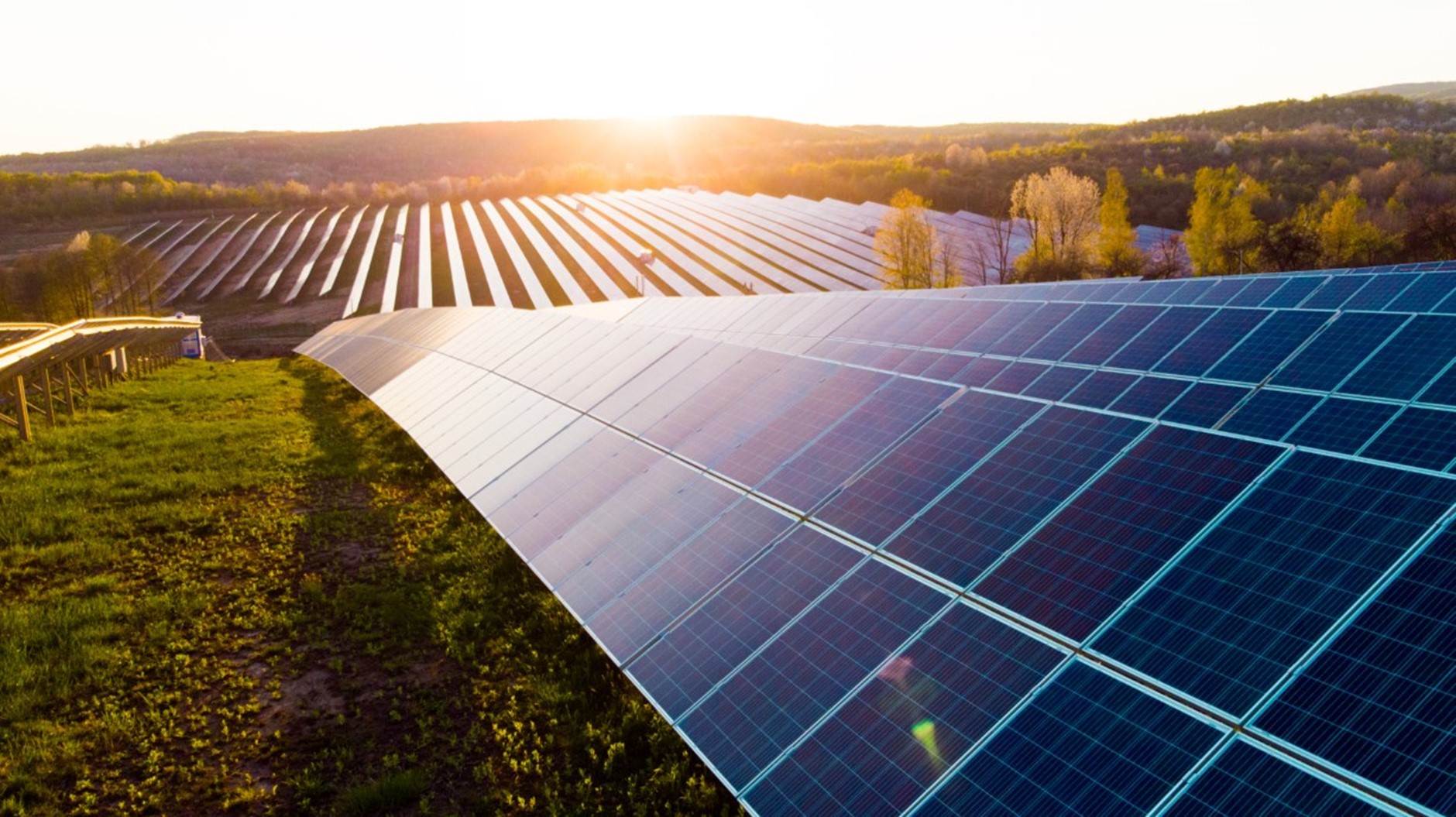
Key information
- Prime land for setting up a solar farm is either flat or on a south-facing slope.
- The average price of solar panel modules is around £200,000 per megawatt produced.
- Solar farms don’t create any by-products, waste or chemicals, making them very clean.
With the UK targeting half of its power to come from renewable sources by 2030, large scale solar farms have become increasingly popular investments across the country. As well as companies, farmers and independent landowners alike are looking to turn their land into a source of clean, sustainable solar power.
In this guide, we’ll help you understand everything you need to know about setting up a solar farm.
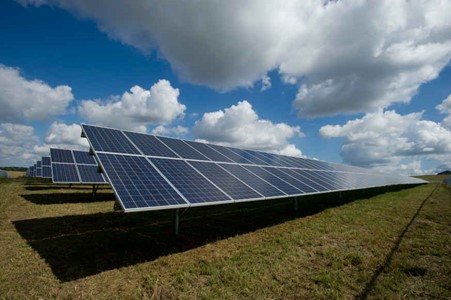
How to set up a solar farm
The first thing you’ll need to set up a solar farm is somewhere for it to go. And when you’re looking for land, know that solar farms need quite a lot of it - for a 1MW farm, you’ll likely need 6-8 acres. Keep in mind that you won’t just need space for the panels themselves. You’ll also need to account for essential equipment like inverters and storage batteries, as well as enough space between the rows of panels to allow for maintenance access.
Your land will also need to have a connection to the grid in order to supply the electricity you’ll generate. If there is no existing connection in place, you’ll have to pay to have one set up.
Solar projects are almost always built on rural land, and the prime spots are either flat or on a south-facing slope. If you’re looking to convert agricultural farmland, be aware that planning permission will create some restrictions. Approval to turn highly fertile fields into solar farms is rarely granted - your best bet will be to apply for land that’s low-yield or only used for grazing.
Getting planning permission is only one part of the process, though. A project like a solar farm has to go through a rigorous set of planning procedures before work can begin. This will mean assessing the suitability of your proposed site, work needed to make it suitable, and any potential impact - positive or negative - on the local environment.
Acquiring planning and approval is by far the longest part of the process. While the construction itself can be completed in a matter of months, the whole development from inception to operation can take anywhere between one and three years.
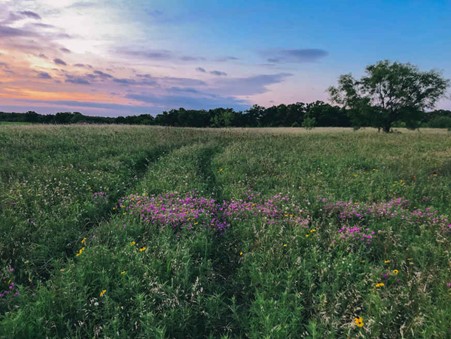
What kind of site is ideal for a solar farm?
The main factors that will mark out a site as great for a solar farm are:
- Irradiance (how much sun the location gets).
- Topography (the elevation and slope of the land - this affects how much light that solar systems get and when).
- Proximity of the site to dwellings (utility-scale farms take up many acres of land and can glint and glare significantly).
- Capacity of a site: sites should be able to accommodate a number of photovoltaic panels set up to maximise efficiency. Large sites can have thousands of panels and a production capacity of 50MW.
- Connection to the electricity grid. Solar farms, also known as solar plants, need to be connected to the grid to export any power they generate. This is especially important for renewable electricity sources like wind and solar: power generation fluctuates and energy storage isn't possible for all of it.
- Agricultural land classification and land type. As mentioned above, solar projects, where possible, should avoid taking up land that is ideal for housing or farming. Planning applications for solar cells on brownfield, contaminated land, industrial land or worse-quality agricultural land are much more likely to be approved.
For prospective solar farm developers, once you've found your ideal site, there are other things to consider: access, site layout, design and appearance. Security, too, as solar facilities do contain high-value equipment that has to be protected with fencing, CCTV and lighting.
Solar farm costs
Solar farms have garnered a reputation over the years for having eye-watering startup costs. And while they certainly aren’t cheap, there has actually been a huge decrease in cost over the last decade. In fact, solar farms today can be set up for over 80% less than in 2010.
That’s largely thanks to their rising popularity, which has helped solar panel manufacturers to develop more cost-effective components. In 2019, the average price of solar panel modules was around £200,000 per megawatt produced, or 20p per watt. Economy of scale also applies here, meaning larger capacity solar farms work out costing less per watt than smaller ones.
But that only covers the materials, not the full cost of the development. And while the price of solar panels might be going down, unfortunately the same can’t be said for land or labour. The average value for an acre of UK farmland in 2020 was between £12,000 and £15,000, although plots can easily exceed this depending on location and accessibility.
However, if you’re looking to convert land you already own into a solar farm, this cost is obviously one you won’t have to worry about.
And while solar projects still have fairly high startup costs, that is somewhat offset by much lower ongoing costs. Solar farms have minimal demands in terms of operation and maintenance, and there are no waste by-products to deal with either. After the initial investment, you shouldn’t need any large operating costs to keep your solar farm running.
The pros and cons
Solar power is still relatively new technology, and as such there are naturally concerns over how it's positives and negatives weigh up.
One common criticism of solar farms is that the need for them to occupy large rural sites will lead to a loss of valuable agricultural land. However, planning permission restrictions make it highly unlikely for a solar farm to take the place of high-yield farmland, while their impact on the land itself is generally low and reversible. What’s more, the land can still be used for animal grazing, or to plant wildflower meadows to help with crop pollination in neighbouring fields.
It’s also not necessarily the case that solar farms have to be built on farmland. Westhampnett solar farm in West Sussex, for example, is sited on a former landfill which would otherwise be unusable due to the levels of methane gas in the ground.
Of course, the biggest benefit to solar farms is their role in meeting the National Grid’s renewable energy needs. Solar technology is a proven source of safe, locally-produced and sustainable power. On average, a 5MW-capacity solar farm will produce enough clean electricity to power 1,350 homes in the UK, while saving 1,200 tonnes of carbon annually.
With startup costs decreasing and the technology constantly improving, solar energy generation is an exciting development to get involved in, and one with great benefits for the planet. Deakin-White can help you find the perfect plot for your solar farm project today.
Credit: Addland



